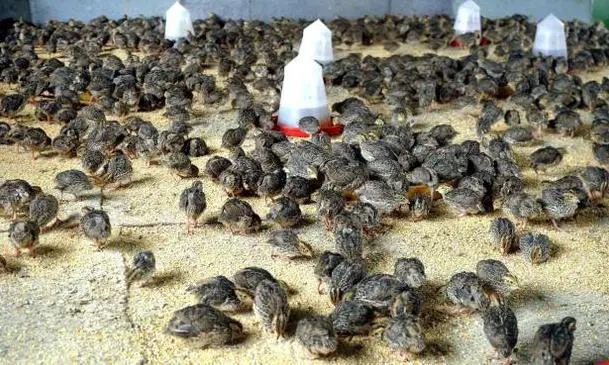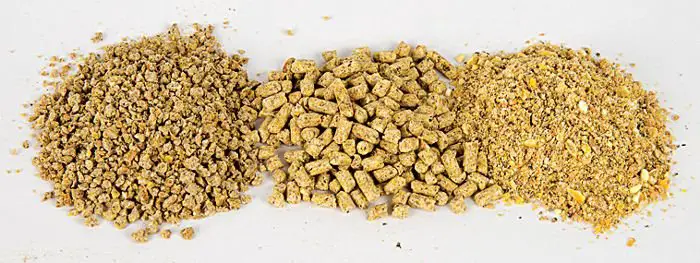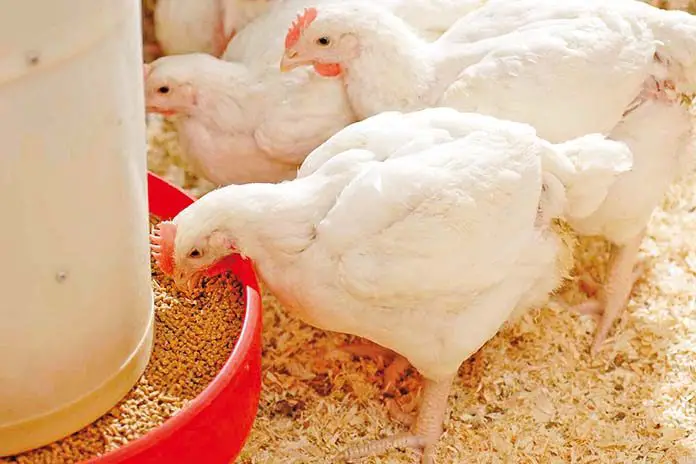Rearing of quails indoors does not even require extraordinarily designed houses or structures, vacant rooms meant for human habitation can comfortably house quail birds. Rearing quail birds is not stressful in terms of space, floor space required by these birds is way less as they are small birds. Quail farming does not usually require deworming and vaccinations unlike with other birds like chickens. This is because quails are resistant to most diseases, hence management of these birds indoors is quite easy. Quails are small birds, because of their small body size, the birds consume less feed. There are many types of quails like the Chinese quail, Rain quail, and Italian quail, but not all are domesticated .Only the Japanese quails and the Bob White quails are allowed to be reared under captivity.
Contents
Brooding
Quail chicks are bought as day-old chicks, reared up to a maturity age of five weeks for meat and more than 5 weeks for breeding stock. Litter material is spread on the floor to about 2.3cm depth. Materials used for litter include well cut grass, wood shavings and groundnut hulls. A cloth must be put on top of the litter material. A brooder guard in the form of a cardboard sheet or metal sheet about 20 cm height is used to encircle the litter material and the cloth. Warmth must be adequate at all times in the room, electric bulbs can be placed in the middle of the brooder, and a charcoal stove can be used in place of the electric bulbs. A brooder guard circle of diameter 60cm can accommodate hundred quail chicks. During brooding stage for quail birds, feeder space of 0.6 cm and drinker space of 0.3 cm is recommendable. Quail chicks can be kept in the brooder for up to two weeks, during brooding the birds are given feed that has a protein content of up to 26%.
Rearing Growers
Once quails are 3-5 weeks old, they are referred to as growers. During this growth stage, the quails are much stronger and are able to withstand stress, if outdoor temperatures are optimum, the brooding lights or charcoal stoves may be removed. Feeder and drinker space should be adjusted to occupy the whole space in the room. Feeders used for quail rearing indoors are supposed to be made in such a way that the birds are not able to place their feet in the feed troughs and waste feed. Growers are given feed with a less protein content of about 20%, this is vital in managing good body weight. Breeding stock can be kept from 5 weeks onwards, laying of eggs commences at 6 weeks.
Social housing
Quail are social animals, females can be housed in stable, single sex groups but males should only be pair housed. In mixed sex groups, the ratio of males: females should never be more than 1:4 respectively. Breeding birds can be housed in pairs or trios comprising one male and two females.
Cover
Quail have a strong preference for cover, and they show less flight behavior if they are frightened while under cover. Either natural or artificial cover should always be provided to reduce stress and encourage natural behavior. Horizontal screens, artificial plants, old Christmas trees, potted grass, stacked hay or straw bales can be used for cover for quail birds when rearing them indoors.
Roof of The House
The vertical flight response in quail can lead to serious head injuries if roofs are too low and made of stiff materials. It is an excellent idea to construct roofs from flexible material, which will not cause head injuries to the quail birds.
Dust Bath
Dust bathing is an important natural behavior for quail, which helps to maintain feather quality and pest control. A facility for dust bathing must be provided for when keeping quails indoors, sandy soil and wood ash can be used as dust baths for quails. In the absence of a dust bath, quails still make motions for dustbathing.
Nesting Material (laying hens)
Pre-laying restlessness from female breeding quails comes as a result of unavailability of nesting areas within the house. Nest boxes can be sited at the edges of the room’s walls, the nesting areas should be filled up with hay for nesting. It is important to note that cover is extremely important for laying female quails, it must be provided for when keeping quails indoors.
Foraging
Quail birds being reared indoors should be provided with an opportunity to forage whilst indoors, grains, fruits and seeds can be scattered around on the floor, hidden under the various covers used within the room to encourage foraging of the birds. Vegetables can be hanged on the roof for the quails to forage on.
Pecking Materials
Quail birds possess a perking behavior, hence pecking material or objects should always be provided when rearing the birds indoors. Supplementary objects for pecking can be provided in addition to floor litter. This may reduce aggression in groups of adults and, if provided for chicks, has been shown to reduce fear of new items and humans when the birds reach adulthood. Cylinders and cubes, stones and pine cones can be used as pecking objects for the quail birds, colored stones can also be used. Feeder length per adult quail should be around 6.5cm to help each quail access food simultaneously.
Indoor Space
Keeping quails indoors requires enough space to accommodate various behaviors exhibited by the birds such as running and flying around which is important for quail birds. The room for rearing quails should have enough space to house covers which are important to quail birds. Indoor space should be sufficient enough for each bird to have its own space free of others. Sufficient space indoors is important in making sure the room is well ventilated. Crowded spaces result in poor ventilation which may result in a number of bird issues due to inadequate oxygen. Plenty of indoor space helps in minimizing transfer of pests and or diseases from one quail bird to the other, space makes isolation of a diseased quail bird easy.





